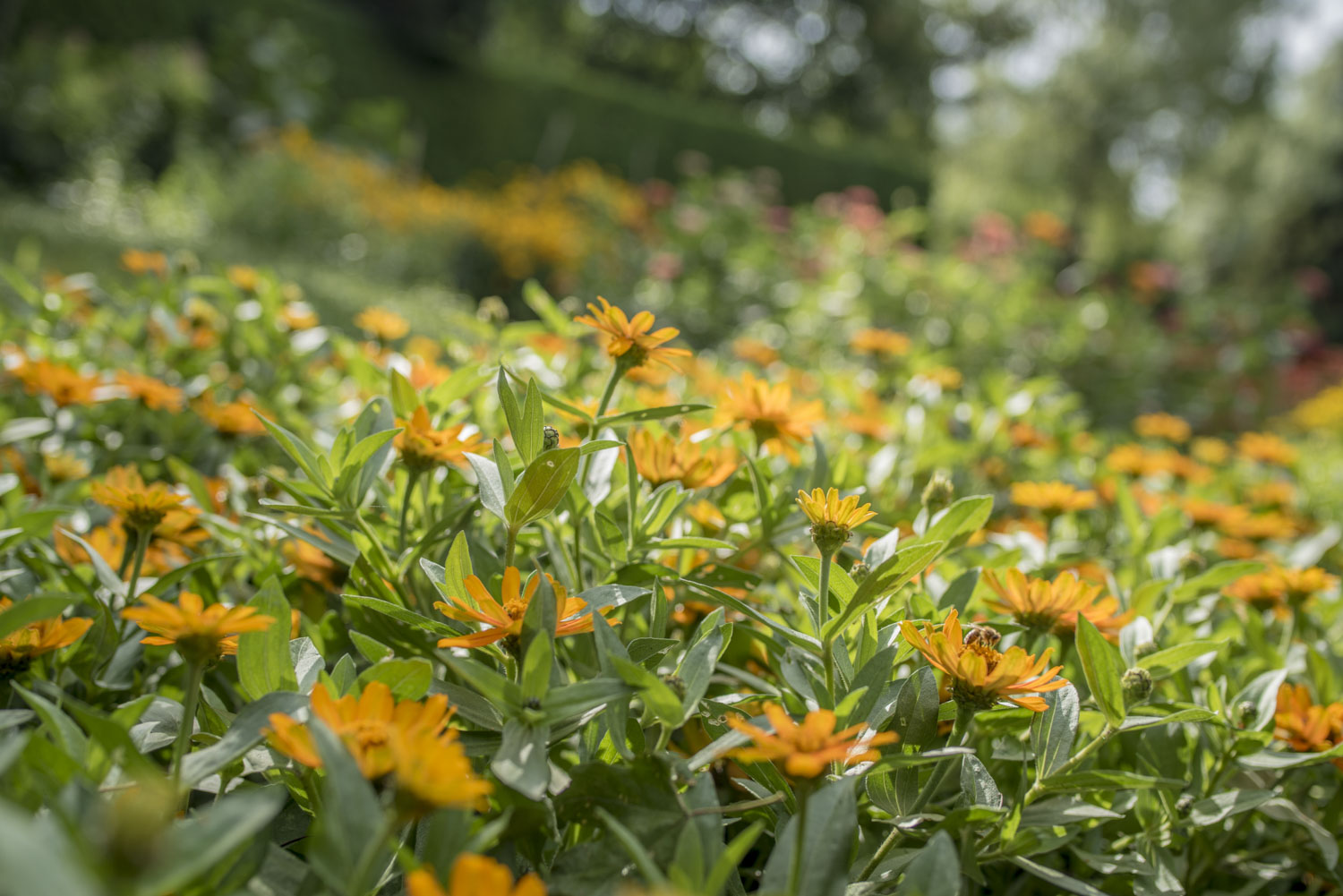The garden where we let nature do its work




There are no gardens in the list. Choose them in our catalogue.
There are no chosen events. Take a look to our calendar of events.



The appearance of the garden, as with fashion or music, has always reflected the tastes of the time and the person who owned, created and used it. This is as true of the past same as it is today. The history of garden art is a fascinating narrative of private paradises that people have created for their everyday livelihood and as a legacy for the next generation, thus securing their immortality.
The garden as an expression of the relationship of man to nature
Human dwellings have always been complemented by gardens. In the Middle Ages, walls surrounded utility spaces, vegetables and medicinal plants. Over time, as humans ceased to fear nature and hostile threats, they gradually began to break through their own fortifications and, using axes and avenues, they captured the landscape around them. This was matter of putting the wilderness of the outside into order, the sovereign rulers thought. Because of this gardens in baroque and classical styles are, in contrast to the waved curves of the architecture, full of not only straight lines and strictly cut green walls, but also of long canals and mirrors reflecting the chateau, thus multiplying the majestic effect of aristocratic houses. In contrast, later, the garden became completely absorbed by nature. This is the case with the English landscape garden, where at first sight it is hard to distinguish where the man-made space ends and where the surrounding landscape begins. Such units of landscape often covered vast expanses. When cities began to spread massively in the nineteenth century, it was necessary to give the inhabitants, in addition to a roof over their heads, the proximity of nature, albeit artificially created. Parks became a social space, where everybody promenaded in their best finery. Also today, huge gardens are built next to opulent villas, but much more attention is paid to parks and common gardens in the countryside and in the city. Nearly every one of us has our own piece of land, a little personal paradise. There is no uniform fashion in its design, everyone creates a garden, or has a garden created, to suit their own particular taste, but much more than ever before, the emphasis is placed on gardening in harmony with nature.
The Middle Ages
Our first utility and also symbolic gardens belonged to monasteries. They were formed by a square courtyard divided by crossing paths into quarters with a tiny fountain in the middle and with plants such as roses or lilies that symbolized the Virgin Mary. Medieval castles also had their gardens. But for them at that time beauty was not the most important factor. In the case of a siege, they were to be a source of healing herbs. However, because the castles were, for strategic reasons, located on rocky outcrops and there was little space, the garden was somewhat of a poor Cinderella at that time.
The Renaissance
This changed with the onset of the Renaissance. Even at that time, there were utility gardens for growing vegetables, fruit, trees or for keeping pheasants. However, well-travelled noblemen started to long for a place, similar to the Italian model that would delight their eye and at the same time represent their family in front of their noble visitors. In the surrounding countryside, there began to appear buildings, so-called summer-houses, which heralded the conquest of nature by man.
Baroque and Classicism
Baroque and Classical gardens with a multitude of cut green walls, ornaments, fountains and water canals or shrubs cut into the so-called topiari shapes are, by contrast, a symbol of self-confidence and power. The landscape is intersected with axes of parkways, tree-lined avenues or vistas attending paths, but they also have a symbolic meaning. Sometimes they make a huge cross in the landscape, sometimes they trace the connecting lines between the chateaus belonging to one family.
Romanticism
At the end of the 18th century, all areas of life began to influence the new trend of coming closer to nature. While during the Baroque period the garden dominated the landscape, in this period the garden was influenced by the countryside. The picturesque landscape with groups of trees and large solitary ones looks as if a human hand has not touched it, but the opposite is true. For example, the gardens of Chateau Lednice, where a watercourse was dug and a number of exotic tree species were planted.


The garden where we let nature do its work
The House of Liechtenstein – an aristocratic family from Central Europe
Adventure in the Garden: When Children Bloom!
Art in the garden
Water in the garden - ornament and brilliant technical work
Greenhouses and Orangeries: Exotic Paradises within Reach
Places of peace and inspiration
Rarities in the fruit and vegetable garden
A natural pharmacy in the garden
The Story of the Garden
Herbs: Pleasure and Profit from the Garden
Where the grapevine flourishes, so do people



58 Parks & Gardens